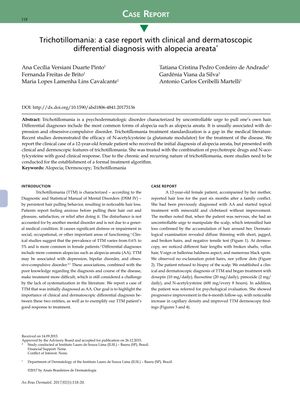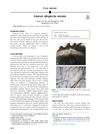Trichotillomania: A Case Report with Clinical and Dermatoscopic Differential Diagnosis with Alopecia Areata
February 2017
in “
Anais brasileiros de dermatologia/Anais Brasileiros de Dermatologia
”

TLDR Trichotillomania is often misdiagnosed as alopecia areata and can be treated effectively with N-acetylcysteine and psychotropic drugs.
Trichotillomania, a psychodermatologic disorder involving an uncontrollable urge to pull one's hair, was often misdiagnosed as alopecia areata. It was associated with depression and obsessive-compulsive disorder. Treatment standardization was lacking, but recent studies showed N-acetylcysteine to be effective. A case of a 12-year-old girl initially diagnosed with alopecia areata but later identified with trichotillomania was reported. She responded well to a combination of psychotropic drugs and N-acetylcysteine. The chronic and recurring nature of trichotillomania highlighted the need for more studies to establish a formal treatment algorithm.

